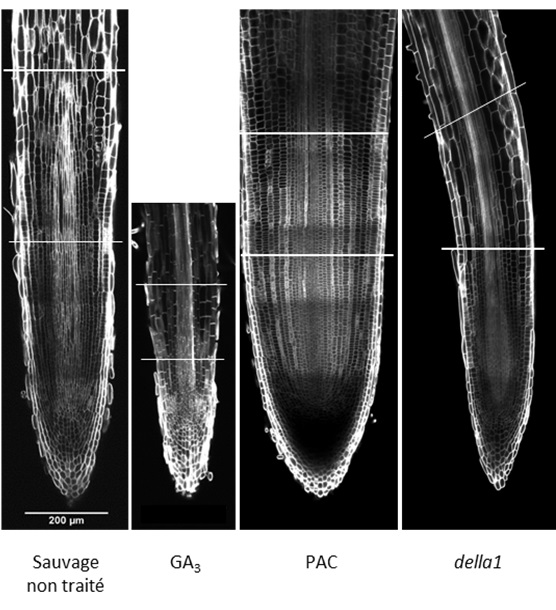Some news on signaling pathways controlling root and nodule development in legume plants
Three studies carried out in the SILEG team of the IPS2 institute and published in January and February 2019 shade light on different aspects of signaling pathways regulating root system development in legume plants.
Recent work performed in the “Signaling pathways regulating legume root system architecture” team headed by Florian Frugier at IPS2 highlighted new features of signaling pathways regulating the root system architecture of legume plants. In the Fonouni-Farde et al. study published in Scientific Reports, a negative function of the gibberellin phytohormones on Medicago truncatula root system development and growth was reported, as well as a role in the patterning of the root cortex. In the Gautrat et al. study published in the Journal of Experimental Botany, a transcriptomic approach revealed that the CLAVATA 3-like (CLE) secreted signaling peptide MtCLE13 regulates negatively the Nod factor signaling pathway required to initiate symbiotic nodulation in M. truncatula roots. In addition, an upregulation of two closely related F-box encoding proteins was identified, which negatively regulate nodulation, as another way to inhibit nodulation. Finally, the Laffont et al. study published in Plant Physiology revealed thanks to the identification of a new mutant allelic series and to the construction of a double mutant, combined with complementary approaches, that an independent regulation of symbiotic nodulation is exerted by the Super Numeric Nodule (SUNN) negative and the Compact Root Architecture 2 (CRA2) positive signaling pathways. These two systemic pathways act in shoots to perceive secreted signaling peptides from two different families, CLE and C-terminally Encoded Peptides (CEP), to integrate signals at the whole plant level to modulate lateral root and/or nodule formation depending on soil nitrogen availability.

Apex structure of roots treated or not with gibberelins (GA3) or the paclobutrazol inhibitor (PAC),
and of the Mtdella1 mutant. After Fonouni-Farde et al., 2019.
